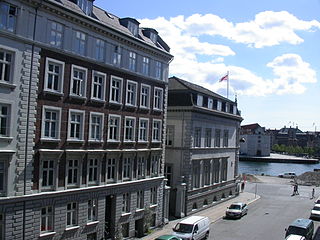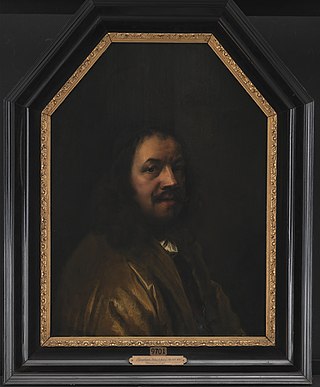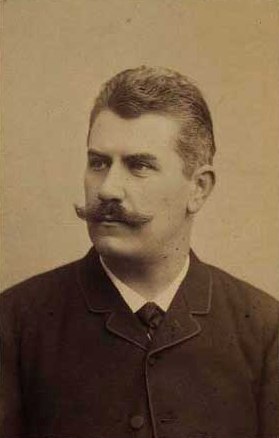
Kunsthal Charlottenborg is an exhibition building in Copenhagen, Denmark. It is the official exhibition gallery of the Royal Danish Academy of Art. [1]

Kunsthal Charlottenborg is an exhibition building in Copenhagen, Denmark. It is the official exhibition gallery of the Royal Danish Academy of Art. [1]
Charlottenborg Palace was constructed in 1672–83 as a residence for Ulrik Frederik Gyldenløve (1638–1704). It was constructed in the Baroque architectural idiom shared by Holland, England and Denmark. . Dowager queen Charlotte Amalie (1650–1714) bought the palace in 1700, and her name has remained with it ever since. In 1787, the ownership of the Palace was transferred to the Royal Danish Academy of Art. [2] [3]
The corps de logis was rebuilt facing Kongens Nytorv in 1827 under design by architect Christian Frederik Hansen (1756–1845), and contains the Academy's Festhall and Antiksalen. Kunsthal Charlottenborg has become famous for its Charlottenborg Spring Exhibition, to which anyone may submit work, which is vetted by a jury before a selection is shown. The fall exhibition, Efterårsudstilling, is by invitation. [4] [5]

Ulrik Frederik Gyldenløve, Landgrave of Laurvig was Governor-general of Norway from 1664–1699. He was the leading general in Norway during the Scanian War, whose Norwegian leg is conventionally named the Gyldenløve War after him. In Norway he was also the Landgrave of Laurvig.

Hans Ulrik Gyldenløve was the illegitimate son of King Christian IV of Denmark and his mistress, Karen Andersdatter. He was also a Danish-Norwegian Navy officer and lensmann bailiff.

Caspar Frederik (Friedrich) Harsdorff, also known as C.F. Harsdorff, was a Danish neoclassical architect considered to have been the leading Danish architect in the late 18th century.

The House of Danneskiold-Samsøe is a Danish family of high nobility associated with the Danish Royal Family, and who formerly held the island of Samsø as a fief.

Kongens Nytorv is a public square in Copenhagen, Denmark, centrally located at the end of the pedestrian street Strøget. The largest square of the city, it was laid out by Christian V in 1670 in connection with a major extension of the fortified city, and has an equestrian statue of him at its centre. The initiative moved the centre of the city from the medieval area around Gammeltorv, at that time a muddy medieval marketplace, to a cobbled new square with a garden complex, inspired by the Royal city planning seen in Paris from the early 17th century.

Charlottenborg Palace is a large town mansion located on the corner of Kongens Nytorv and Nyhavn in Copenhagen, Denmark. Originally built as a residence for Ulrik Frederik Gyldenløve, it has served as the base of the Royal Danish Academy of Fine Arts since its foundation in 1754. Today it also houses Kunsthal Charlottenborg, an institution for contemporary art, and Danmarks Kunstbibliotek, the Royal Art Library.
Ulrik is a male name, a Scandinavian form of Ulrich. Ulrik may refer to:

Gammelholm is a predominantly residential neighbourhood in the city centre of Copenhagen, Denmark. It is bounded by the Nyhavn canal, Kongens Nytorv, Holmens Kanal, Niels Juels Gade and the waterfront along Havnegade. For centuries, the area was the site of the Royal Naval Shipyard, known as Bremerholm, but after the naval activities relocated to Nyholm, it came under residential redevelopment in the 1860s and 1870s. The new neighbourhood was planned by Ferdinand Meldahl and has also been referred to as "Meldahl's Nine Streets". Apart from the buildings which face Kongens Nytorv, which include the Royal Danish Theatre and Charlottenborg Palace, the area is characterized by homogeneous Historicist architecture consisting of perimeter blocks with richly decorated house fronts.

Ingeborg Akeleye was a Norwegian noblewoman and heiress. She became known for her association with prominent men and her adventurous love life.

Aage Giødesen was a Danish painter who worked in the late 19th and early 20th centuries. He is mainly known for landscapes, as well as for portraits and marine subjects.

Abraham Wuchters was a Brabant-born Dutch-Danish painter and engraver. He was born in Antwerp but had most of his career in Denmark where he and Karel van Mander III became the preferred painters of the Danish King, nobility and bourgeoisie. Together they represent the main influence from the Dutch Golden Age on Danish Baroque art.
Events from the year 1677 in Denmark.

The Moltke's Mansion is a town mansion on the corner of Bredgade and Dronningens Tværgade in Copenhagen, Denmark. It is one of several town mansions in Frederiksstaden, although it actually predates the neighbourhood by half a century. It was built for Ulrik Frederik Gyldenløve between 1700 and 1702 and was originally known as Gyldenløve's Little Mansion. It received its current name in 1842, after it was acquired by Adam Wilhelm Moltke, the first Danish Prime Minister under the Danish constitutional monarchy.
This 1728 map of Copenhagen shows the overall layout of Copenhagen, Denmark, as well as the location of important buildings and other features, as it appeared Anno 1728, immediately before the Copenhagen Fire of 1728. The map shown here was published by Oluf Nielsen in 1884 but relies on a map published J. F. Arnoldt in January 1728. The original map can be seen here.

The Charlottenborg Spring Exhibition is an annual art exhibition in Copenhagen, Denmark.

Hans Christian Amberg was a Danish architect.

Frederik Hansen Sødring was a Danish landscape painter and founder of an endowment.

Axel Høeg-Hansen was a Danish architect. Stylistically he mainly worked in neoclassical and functionalist styles. He primarily worked in and around Aarhus at the turn of the 20th century.

Nyhavn 20, also known as the Boel House, is a listed property overlooking the Nyhavn canal in central Copenhagen, Denmark. A plaque on the facade commemorates that Hans Christian Andersen lived in the building when he had his first fairytale published.

Christen Christensen was a Danish sculptor and medallist. His works as a medallist include the Royal Danish Academy of Fine Arts' C. F. Hansen Medal and Thorvaldsen Medal.